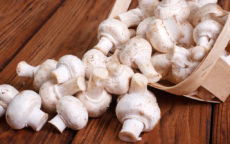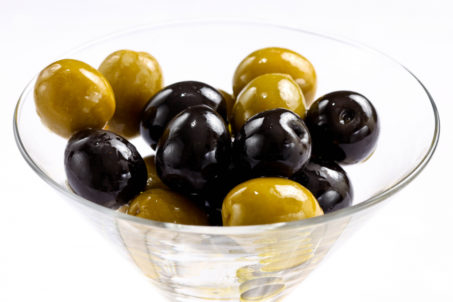The table of carbohydrates in foods helps rethink your diet. Saturate it with more useful products and remove excess, that which does not benefit, but is deposited at the waist.
Table: Carbohydrates in Food
Carbohydrates or hydrocarbons are the most common substances on earth. But depending on the chemical composition, they can take completely different forms. Therefore, their content varies greatly depending on the source of food.

For example, in plants, carbohydrates make up 80% by weight. Animals have much less, not more than 2 - 3%.
Milk products
Dairy products are often included on diet menus, as they do not contain a lot of calories and carbohydrates. Their sugars are mostly represented by lactose, which in fresh milk contains no more than 5.2%.
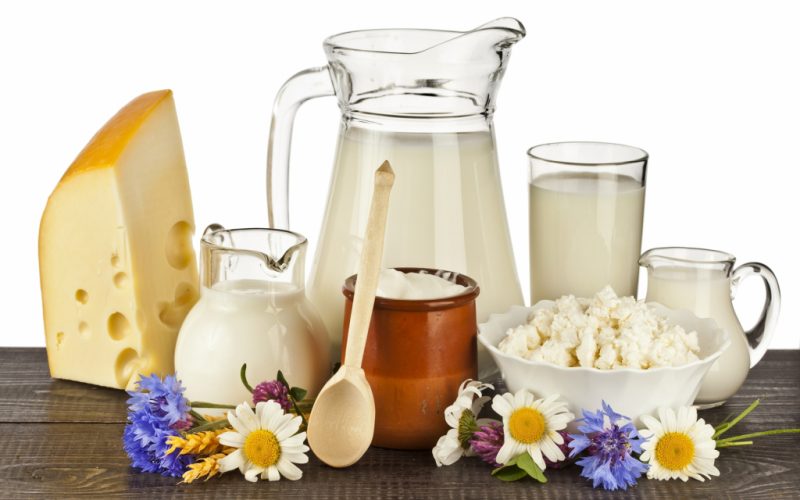
In processed foods, sugar is even less, since it is broken down by lactic acid bacteria during fermentation.
| Product | Carbohydrate content per 100 g |
|---|---|
| powdered milk | 40 |
| condensed milk | 9 |
| milk | 4,7 |
| fat kefir | 4 |
| low-fat kefir | 3,8 |
| cream 22% | 3,6 |
| yogurt | 3,5 |
| cream 10% | 2,9 |
| low-fat cottage cheese | 1,5 |
| fat cottage cheese | 1,3 |
| hard cheese | 0 – 1 |
The fatter the dairy product, the less carbohydrates in it. And vice versa.
Meat and meat products
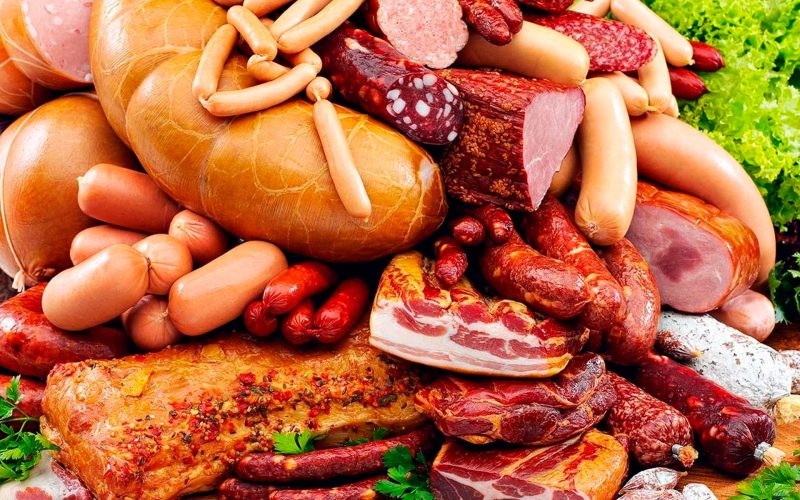
Occasionally, these compounds are present as glycogen in muscle fibers.The greatest amount of hydrocarbons is found in highly processed products, in the manufacture of which sugar, spices and plant materials are added.
| Product | Carbohydrate content per 100 g |
|---|---|
| sausages | 5,5 |
| salami | 1,9 |
| doctor's sausage | 1,5 |
| chicken's meat | 1 |
| turkey | 0,7 |
| beef | 0,6 |
| pork | 0,4 |
| mutton | 0,3 |
| ham | - |
Most often, the carbohydrate content is simply not indicated on the packaging with meat, or they write 0 g.
In cereals, cereals and legumes
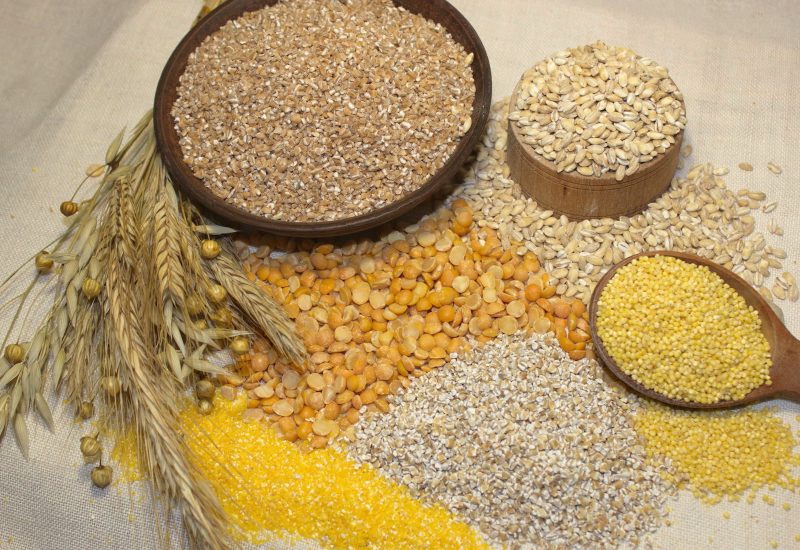
Grain products are the most significant source of carbohydrates. These compounds are presented in cereals and beans as a difficult to digest form - fiber, as well as easily digestible starch. Carbohydrates of cereals and legumes not only provide energy, but also play a crucial role in digestion.
| Product | Carbohydrate content per 100 g |
|---|---|
| polished rice | 74 |
| semolina | 70 |
| barley | 67 |
| millet | 66 |
| cereals | 62 |
| buckwheat | 57 |
| beans | 54 |
| lentils | 54 |
| peas | 53 |
| soybeans | 26 |
| beans | 8 |
Carbohydrates of cereals and legumes are slowly digested and for a long time give a feeling of fullness.
In fruits, vegetables, dried fruits
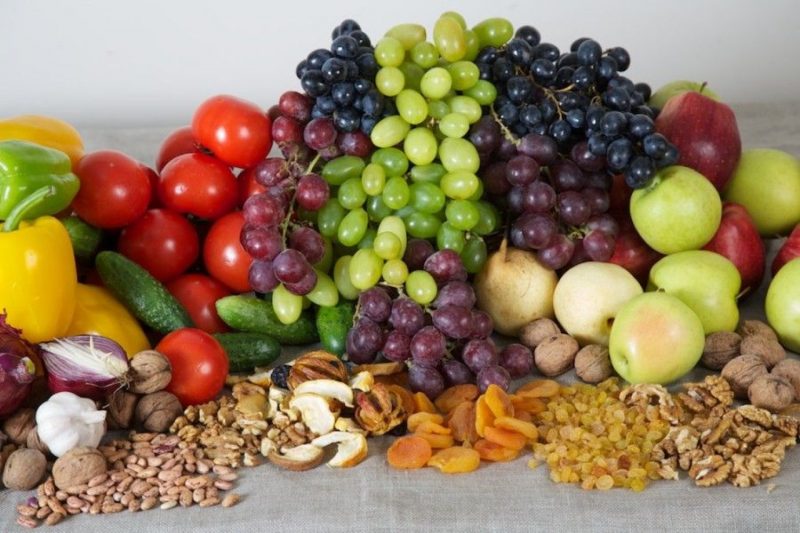
Fruits are rich in simple sugars, in particular glucose, which is necessary for the nutrition of brain cells. In addition, they contain a complex hydrocarbon pectin, which binds and removes toxins from the body, cleanses the intestines from toxins and creates a favorable environment for the reproduction of beneficial intestinal bacteria.
| Product | Carbohydrate content per 100 g |
|---|---|
| raisins | 71 |
| dried apricots | 66 |
| potatoes | 20 |
| grape | 17,5 |
| cherry | 11 |
| pear | 11 |
| apples | 11 |
| beet | 11 |
| porcini mushrooms | 10 |
| onion turnip | 9,5 |
| apricots | 9 |
| carrot | 7 |
| pumpkin | 6,5 |
| eggplant | 5,5 |
| cabbage | 5,4 |
| tomatoes | 4,2 |
| cucumbers | 3 |
The benefits of vegetables are high in fiber, which is essentially a complex carbohydrate.
Dried fruits contain all substances in a concentrated form. Their consumption should be limited to those who monitor the amount of calories coming from food.
In confectionery
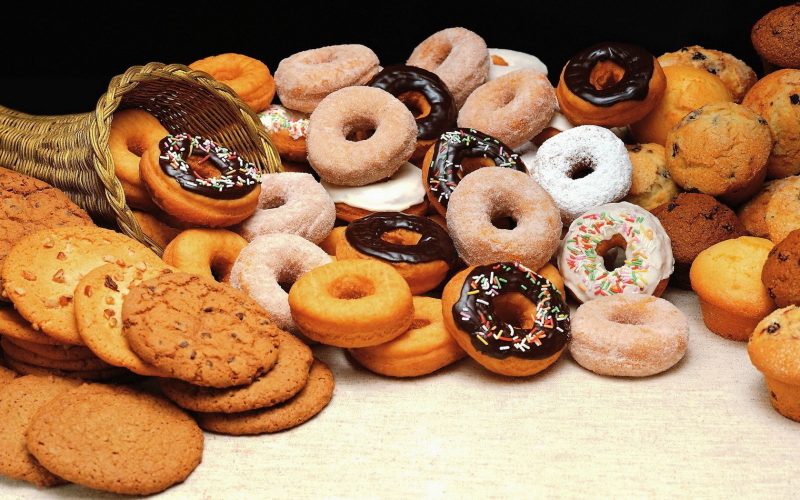
Confectionery products along with pasta, bread and cereals are the most important source of carbohydrates in the diet. However, those carbohydrates found in baked goods, cakes and sweets are far from always beneficial.
| Product | Carbohydrate content per 100 g |
|---|---|
| candy canes | 97 |
| caramel | 93 |
| cake "Napoleon" | 84 |
| paste | 80 |
| marshmallows | 80 |
| gingerbread cookies | 75 |
| butter cookies | 68 |
| waffles | 63 |
| chocolate candies with pralines | 58 |
| chocolate | 52 |
| sponge cake | 50 |
| puff pastry | 46 |
| marmalade | 23 |
Most hydrocarbons in confectionery are sugar and starch, which are quickly absorbed and satisfy hunger. But if they are not consumed as energy, they are converted to fat and stored as reserves. Therefore, replenishing the amount of carbohydrates with flour and sweet is not the best idea.
Carbohydrate content in nuts and seeds
Carbohydrates of seeds and nuts are represented by complex compounds. The consumption of such food does not lead to a sharp rise in glucose in the blood.
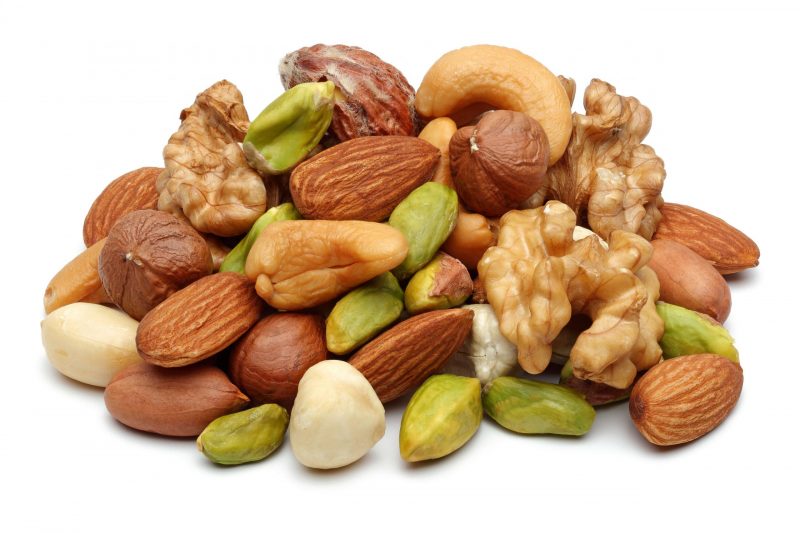
In other words, seeds and nuts have a low glycemic index. They are allowed to eat even for patients with diabetes.
| Product | Carbohydrate content per 100 g |
|---|---|
| peanut | 25 |
| almond | 14 |
| Walnut | 14 |
| cashew | 12 |
| hazelnut | 10 |
| sunflower seeds | 5 |
| Brazilian nut | 5 |
| pumpkin seeds | 4 |
Nuts and seeds are the most high-calorie foods. Their use is recommended to be limited to one handful per day.
Seasonings, spices, sauces
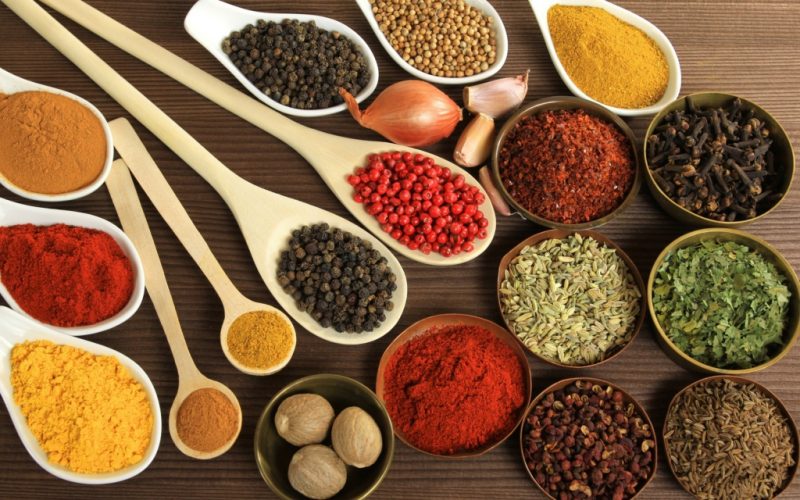
Seasonings and spices contain a huge amount of carbohydrates due to starch and carbon compounds that pass into the product from plant materials. These aromatic additives are excluded from the diet with almost any diet designed for weight loss.
| Product | Carbohydrate content per 100 g |
|---|---|
| oregano | 69 |
| dried basil | 48 |
| black pepper | 38 |
| Provence herbs mix | 20 |
| fresh mint | 14 |
| tomato ketchup | 14 |
| white sauce | 5 |
| mayonnaise | 3 |
| soy sauce | 1 |
The carbohydrate content in sauces directly depends on the method of preparation of the product.If sugar and flour are added to it, the percentage of carbohydrates increases accordingly.
But, for example, a product such as soy sauce is prepared by fermenting beans. In it, part of the sugars is broken down by bacteria, therefore, the carbohydrate content in the finished product is lower than in the feedstock.
Juices and other soft drinks
What is healthier to drink juices or eat fresh fruits? Natural juice is certainly a worthy drink. But in terms of nutrients, it is inferior to the whole fruit. Some minerals and most pectin fibers remain in the pulp.

Most simple sugars go into juice. This drink quickly raises blood glucose levels. With juices, you should be careful not only losing weight, but also with patients with diabetes.
| Drink | Carbohydrate content per 100 ml |
|---|---|
| pomegranate juice | 58 |
| Cherry juice | 49 |
| Pineapple juice | 48 |
| Coca Cola | 41 |
| fanta | 41 |
| sprite | 38 |
| Orange juice | 37 |
| peach juice | 27 |
| kvass | 26 |
| Pinocchio lemonade | 24 |
| cocoa | 22 |
| tea | 0 |
Do not forget that, despite the approximately equal content of carbohydrates, juice is still a natural product. While drinks like "lemonade" contain chemical flavors and preservatives.
List of Low Carbohydrate Slimming Products
Low-carb diets can be used not only for weight loss, but also for healing the body. Foods with a low carbohydrate content allow you to control your appetite, satisfy your hunger for a long time and naturally reduce the amount of food consumed. Weight goes away on its own.
At the same time, blood pressure and levels of severe cholesterol are reduced. A low-carb diet not only eliminates extra pounds faster than others, but also unloads the liver and heart.
According to observations, the weight on a diet with a low content of carbohydrates goes 2 times faster than on a fat-free diet. Listing products is easy. It is enough to take into account that the smallest amount of these compounds contains animal food, dairy products, most vegetables and some fruits.
It immediately becomes clear that all confectionery products, juices and sugary drinks fall under the ban.
The list contains products with the smallest to largest carbohydrate content:
- tea, coffee without sugar;
- eggs
- hard cheese;
- vegetable oil;
- ham;
- lean meat (pork, lamb, beef);
- chicken, turkey;
- fatty fish (salmon, trout, sardine);
- cottage cheese, yogurt;
- asparagus;
- champignons;
- cabbage;
- eggplant, sweet pepper, green beans;
- olives;
- carrot;
- avocado;
- Strawberry;
- grapefruit;
- apricot;
- walnuts, hazelnuts, cashews.
From these products you can make a very rich diet. However, it is worth knowing that most sources of animal origin are low in carbohydrates, but high in protein.
With excess protein, the excretory and digestive systems fall under attack. It is very important to maintain a balance and not to cross the line where the useful becomes harmful.
By studying the tables, you will be able to independently calculate how many carbohydrates in the products are daily on your plate. We hope this information helps you find the perfect diet.


